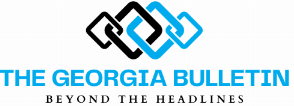The Segno_Di_Spunta, a term steeped in the rich tapestry of the Italian language, translates literally to “sign of the point” or “mark of the check.” It signifies, in its simplest form, confirmation, completion, or selection. But beyond its basic functionality lies a world of fascinating history, versatile applications, and undeniable elegance.
This article delves into the captivating story of the Segno_Di_Spunta, exploring its origins, evolution, and profound impact on visual communication across cultures. We’ll unveil its surprising versatility in various languages and uncover the psychology behind its effectiveness. Additionally, we’ll delve into the design principles that make the checkmark a timeless symbol of clarity and efficiency.
A Journey Through Time: The Origins of the Segno_Di_Spunta
The exact origin of the Segno_Di_Spunta remains shrouded in a veil of historical ambiguity. However, scholars trace its possible roots back to ancient civilizations. Some theories suggest a connection to tally marks used in early bookkeeping practices, where a check might have indicated a completed transaction. Others point to the use of diagonal lines in early mapmaking to denote specific locations.
The widespread adoption of the Segno_Di_Spunta likely coincided with the rise of literacy and the development of more formal record-keeping systems. By the medieval period, checkmarks were demonstrably used in Europe to verify completed tasks in manuscripts and ledgers.
The Checkmark’s Global Expansion: Beyond Borders and Languages
The Segno_Di_Spunta transcended geographical and linguistic boundaries. Its inherent simplicity and functionality resonated with cultures worldwide. In many languages, the checkmark took on localized forms while retaining its core meaning.
For instance, the German “Häkchen” translates to “little hook,” reflecting the symbol’s visual characteristic. Similarly, the French “cocher une case” literally means “to tick a box,” highlighting its application in selection processes. Interestingly, some languages, like Hebrew and Arabic, utilize a variation of the checkmark with the opposite direction (a checkmark facing left instead of right).
This global adoption underscores the checkmark’s universality as a symbol that transcends spoken language. It speaks a visual language, readily understood by people from diverse backgrounds.
The Psychology of Confirmation: Why the Checkmark Works
The effectiveness of the Segno_Di_Spunta lies not just in its simplicity but also in its ability to tap into our inherent human desire for confirmation and closure. A checkmark provides a satisfying visual cue, a confirmation that a task has been completed, a box has been ticked, or a choice has been made.
Studies have shown that checkmarks can influence our decision-making processes. When presented with options marked with checkmarks, we tend to perceive them as more favorable or trustworthy. This highlights the power of the symbol in marketing and user interface design, where strategically placed checkmarks can guide users towards desired actions.
Design Principles: The Art of the Perfect Checkmark
The seemingly simple checkmark embodies a delicate balance of design principles. Its effectiveness hinges on striking the right chords between clarity, efficiency, and aesthetics.
- Clarity: The checkmark should be instantly recognizable, free from unnecessary embellishments. Its form should leave no room for misinterpretation, ensuring it conveys the intended message unequivocally.
- Efficiency: The symbol should be easy to draw or replicate, even in a hurried manner. Its clean lines and minimal form allow for quick and effortless communication.
- Aesthetics: While primarily functional, the checkmark can also possess a certain elegance. The angle of the diagonal line, the thickness of the stroke, and the balance of negative space all contribute to its visual appeal.
These design principles, when artfully combined, elevate the Segno_Di_Spunta from a mere symbol to a testament to the power of visual communication.
Beyond Confirmation: The Diverse Applications of the Checkmark
The Segno_Di_Spunta’s reach extends far beyond simple confirmation. It has become an indispensable tool in various fields, each leveraging its unique properties for distinct purposes.
- Education: Checkmarks are ubiquitous in classrooms, marking completed assignments, indicating comprehension on quizzes, and providing valuable feedback to students.
- Data Analysis: Checkmarks help categorize and organize data sets, allowing researchers and analysts to identify trends and patterns.
- Voting Systems: The checkmark plays a crucial role in democratic processes, enabling voters to clearly indicate their choices on ballots.
- Software Design: Checkmarks guide users through digital workflows, highlighting completed steps and providing visual cues for navigation.
These diverse applications showcase the checkmark’s remarkable adaptability, serving as a cornerstone of clear communication across various disciplines.
The Enduring Legacy of the Segno_Di_Spunta
The Segno_Di_Spunta stands as a testament to the enduring power of simple yet effective design. It is a symbol that transcends language barriers, cultural differences, and technological advancements. Its ubiquity in our everyday lives speaks volumes about its enduring legacy.
Conclusion: A Timeless Symbol of Clarity and Efficiency
The Segno_Di_Spunta is more than just a checkmark; it’s a symbol woven into the fabric of human communication. Its enduring legacy lies in its ability to bridge divides, simplify complex tasks, and provide a sense of accomplishment. As we navigate an increasingly complex world, the checkmark’s elegance and functionality will undoubtedly continue to serve us well.
We hope this exploration of the Segno_Di_Spunta has enlightened you about this seemingly simple yet remarkably versatile symbol. The next time you encounter a checkmark, take a moment to appreciate its rich history, its psychological impact, and its enduring contribution to clear and efficient communication across cultures.
